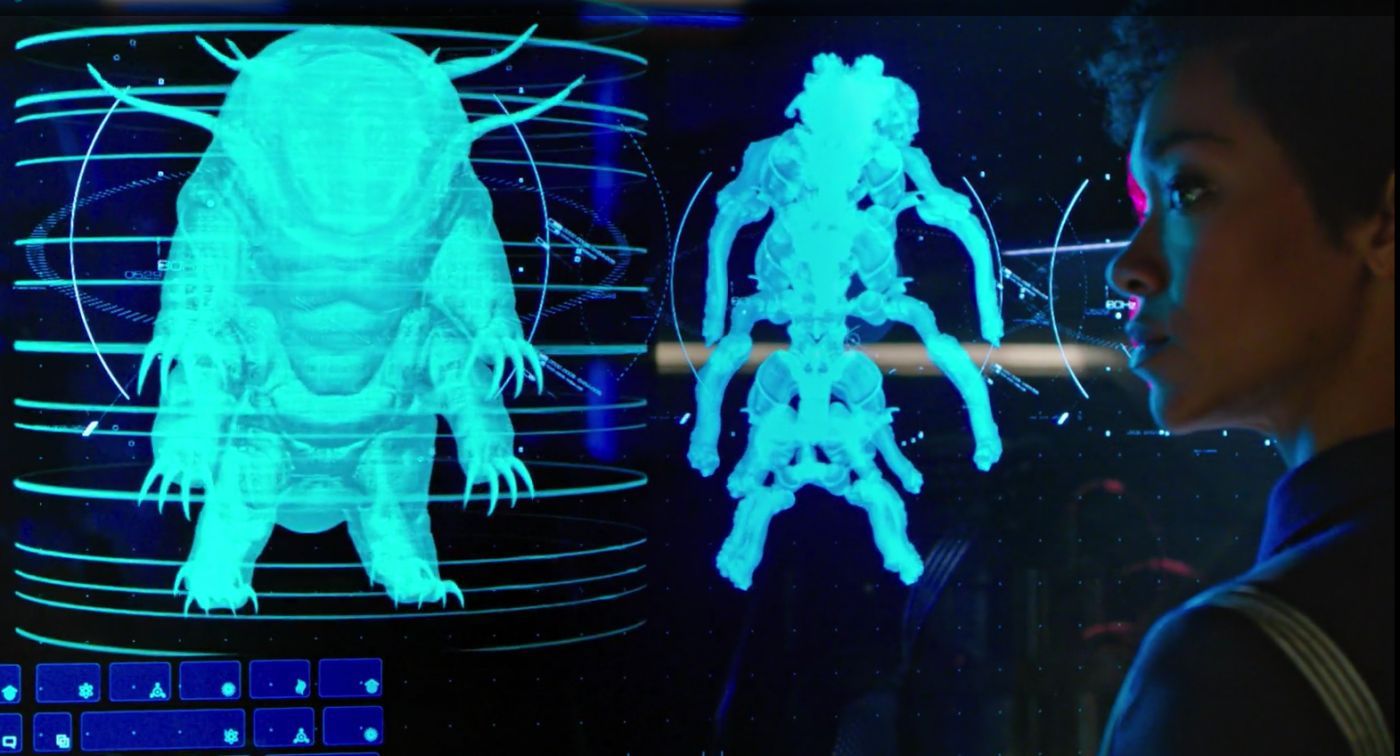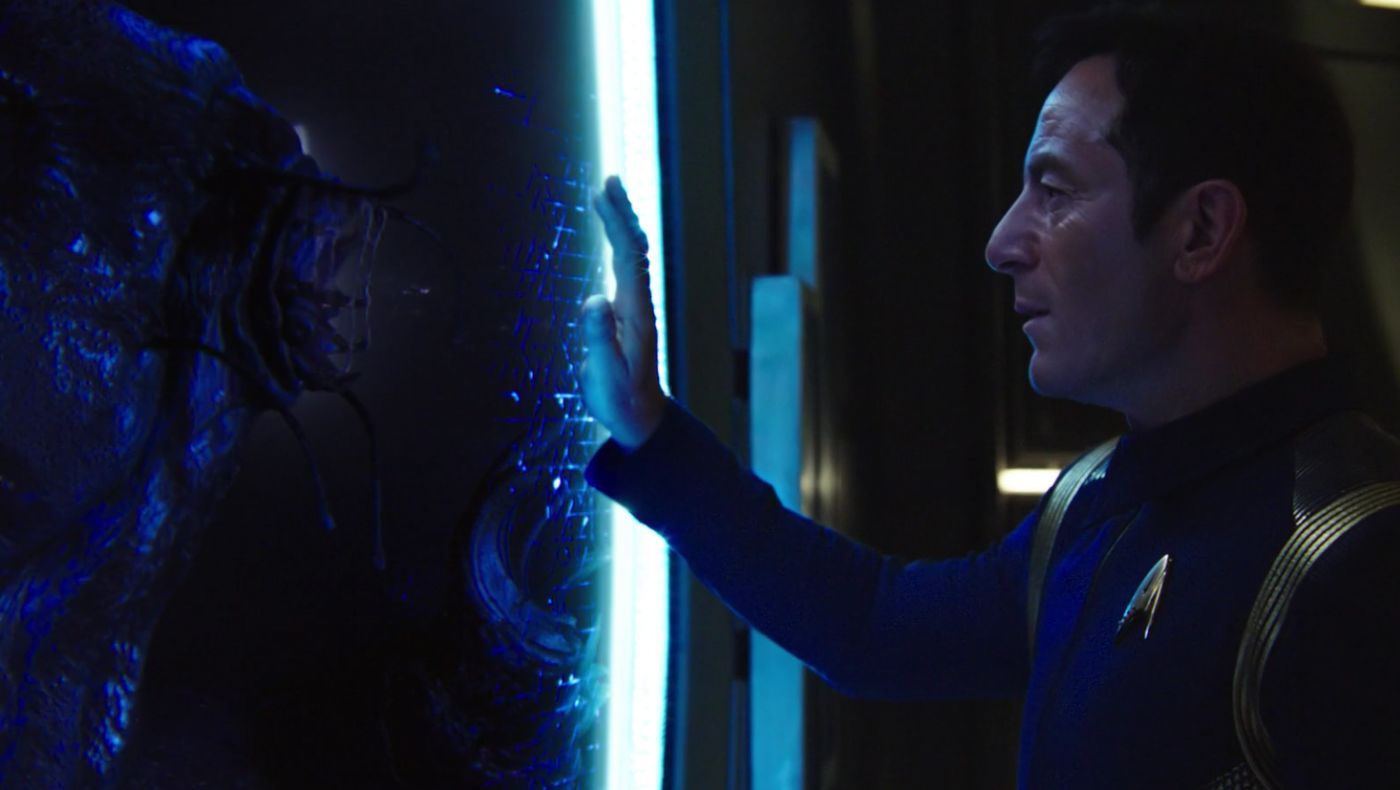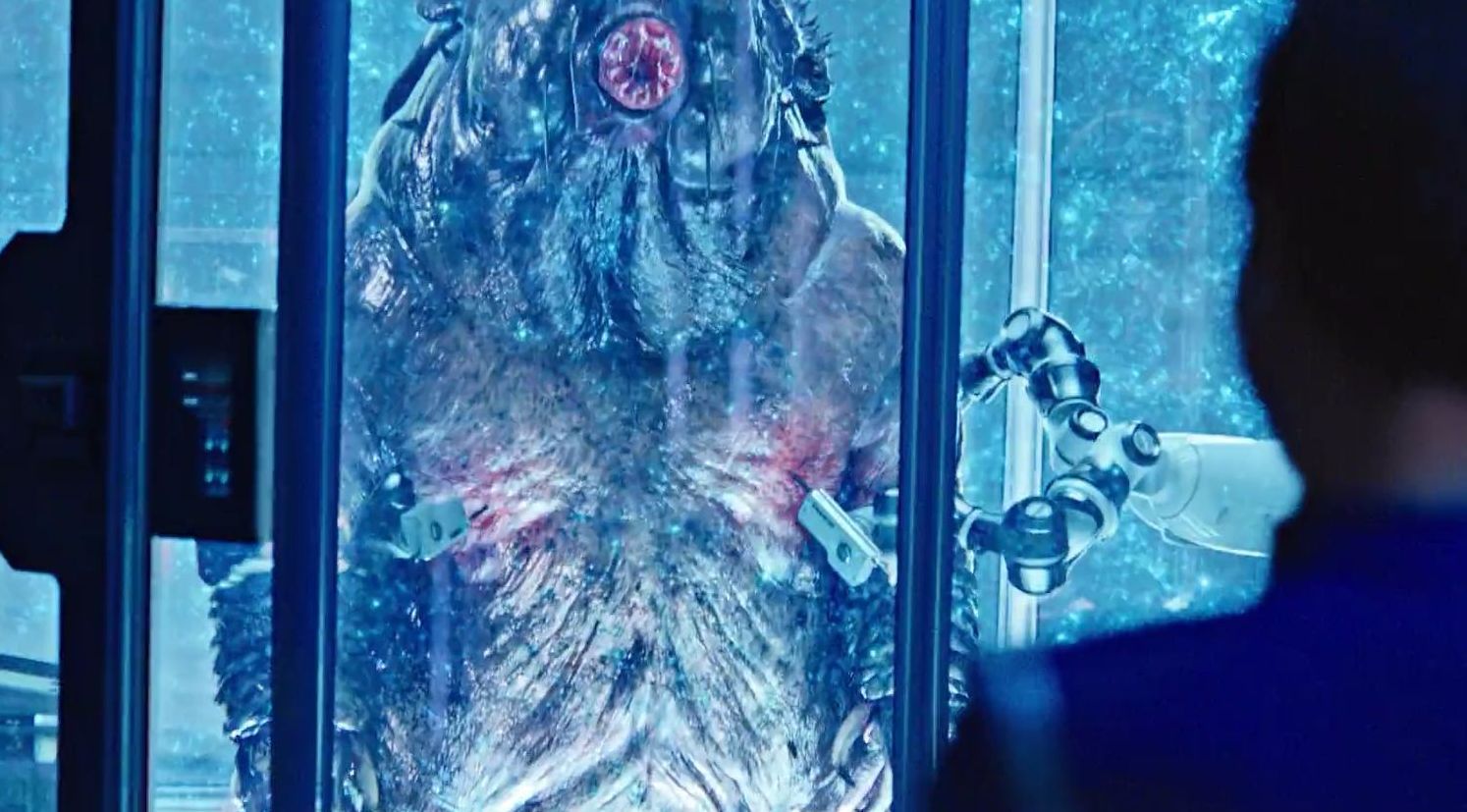One of the guiding principles of Starfleet is "to seek out new life and new civilizations." Though Star Trek: Discovery began its 15 episode voyage introducing the backstory of its lead character Michael Burnham (Sonequa Martin-Green) and setting up the Klingon War, the series has since settled in and begun embracing the more familiar characteristics of Star Trek. In the past two episodes, Discovery has introduced a new alien species that is rather unlike anything seen before in Star Trek, and then pulled off the neat trick of revealing a surprising function for the alien on board the U.S.S. Discovery.
The Discovery, commissioned as a science and exploratory vessel, has been forced to become a warship. Under the command of Captain Gabriel Lorca (Jason Isaacs), Discovery's new mission is to find a way to win the war and pursue any avenue to achieve this objective and save the Federation from the Klingons. As such, Lorca has been searching for any and all types of weapons and technology that would give them an advantage over the Klingons.
Discovery and her sister ship the U.S.S. Glenn were the only two ships in Starfleet that possessed experimental displacement-activated spore hub drives. Based on technology developed by Lieutenant Paul Stamets (Anthony Rapp), the spore hub drives allow a starship to travel on the Mycelium spore network, which encompasses the known universe. Essentially a starship could jump to any point and the universe and back instantaneously. The technology was unreliable; the Glenn had found a way to use the drive to make longer space jumps where Discovery could not, but the Glenn suffered a fatal accident when it crashed into an undetected Hawking radiation firewall, killing all hands aboard. Except for one life form.
In the third episode "Context Is For Kings," an away team from Discovery boarded the derelict Glenn and encountered the bodies of Klingon soldiers trying to steal tech. They then encountered a giant monster, that chased them around the ship, until Michael Burnham was able to distract it long enough for the away team to escape on their shuttle craft. Later, Captain Lorca ordered the monster beamed on board Discovery where he imprisoned it within his secret war room, containing a menagerie of deadly weapons and artifacts he is studying to help Starfleet gain an edge on the Klingons. In the newest episode "The Butcher's Knife Cares Not For the Lamb's Cry," Lorca gave Burnham her first assignment as a member of Discovery's crew: find out how the creature has claws that can rip through the hull of a ship, how its hide is able to withstand a phaser set to kill, and weaponize it against the Klingons.
RIPPER
What Burnham discovered when she analyzed the creature is that it shares natural traits with the tardigrade species found on Earth. The tardigrade, or water bear, is a micro animal that can survive extreme heat and sub-freezing temperatures, including the vacuum of space. The tardigrade on Discovery has a natural aversion to light and was not carnivorous; it had passive means of obtaining nutrition. Burnham theorized that the tardigrade was not an inherently hostile creature but attacks in self-defense.
These findings weren't good enough for Commander Landry (Rekha Sharma), who only saw the tardigrade as a monster. Landry named the tardigrade "Ripper" and insisted they follow Lorca's orders and find a way to immediately weaponize it. She foolishly released it and attacked it; the tardigrade rampaged in self-defense and quickly made short work of Landry.
However, Burnham's theories about Ripper not being inherently hostile were proven correct when she asked First Officer Saru (Doug Jones) to the menagerie and showed him the tardigrade. Saru, a Kelpien, possesses threat ganglia which warn him of imminent danger. When Saru's threat ganglia didn't immediately react to Ripper, Burnham confirmed Ripper was not a direct threat to life. Ripper has a different function entirely than as a weapon.
THE NEW NAVIGATOR
Discovery's new mission was to jump 84 light years and save the colony of Corvan 2 - the galaxy's largest supplier of dilithium crystals, which power the warp drive of every starship - from Klingon attack. With less than 6 hours before Corvan 2 would be destroyed, Discovery needed to make a jump farther than it ever had successfully before. However, Discovery lacked the ability to maintain navigational stability to make long jumps accurately. The away team brought a device on board from the Glenn that was an augmentation they used to their navigation system which allowed them to make perfect long jumps on the Mycelial spore network, but it was missing a super computer that could process the calculations necessary to make the jumps accurate.
Burnham realized the tardigrade was reacting to the spores during Discovery's "Black Alert" when they made their jumps and it was communicating with the spores. She and Stamets proved this theory correct and then placed Ripper in the reaction cube in Engineering, where Ripper interfaced with the device from the Glenn. Ripper was the super computer the Glenn was using; Ripper can achieve a symbiosis to communicate with the spores and accurately calculate the coordinates for their jumps. With Ripper's help, Discovery was able to make the jump to Corvan 2, destroy the attacking Klingon ships and save the colony.
Though Ripper proved itself to be an invaluable 'member of the crew,' Burnham learned interfacing with the Mycelium spore drive takes a physical toll on Ripper. "I'm sorry," Burnham told the tardigrade as she offered it more spores to sooth its pain. Like Burnham herself, Ripper is now under the thrall of Captain Lorca and enlisted into the war effort. But at what cost?
One thing's for sure, Star Trek: Discovery has contributed something new and unique to Star Trek lore with Ripper, a starship navigator quite unlike Mr. Chekov (Walter Koenig), who will be the Starship Enterprise's navigator a decade from now in the timeline. Ripper is yet another example of how Star Trek teaches not to judge a species by its appearance, because you never know what valuable contribution a life form can offer to the greater good.
NEXT: NO, THE ORVILLE IS NOT BETTER THAN STAR TREK: DISCOVERY
Star Trek: Discovery streams at 8:30pm ET Sundays on CBS All-Access and on Netflix internationally.



